Indian Ocean Crossing Part 2: Rodrigues – Reunion – South Africa
Following a challenging crossing from Western Australia to Rodrigues (Mauritius), Brent Crack and Mary Bevan report on part 2 of their Indian Ocean crossing, from Rodrigues to South Africa. They experienced the rugged beauty of Reunion Island and hid from the weather in Madagascar and Mozambique before arriving in Richard’s Bay, South Africa.
Published 6 days ago
Indian Ocean Crossing Part 1: Australia to Rodrigues
From Rodrigues to Reunion
The next stop for us was Reunion Island — the southern-most part of the European Union as part of France. Arrival to Reunion is only permitted if there is a berth reserved in the marina and as there is a lot of information on Noonsite about the process, we won’t reiterate it here. Suffice to say, without an approved marina reservation, one cannot arrive in Reunion Island.
Reunion Island was spectacular. The scenery of the rugged mountains and volcanic plateaus is out of this world. Roads are full of switchbacks and sharp turns, especially once you are off the main highway.
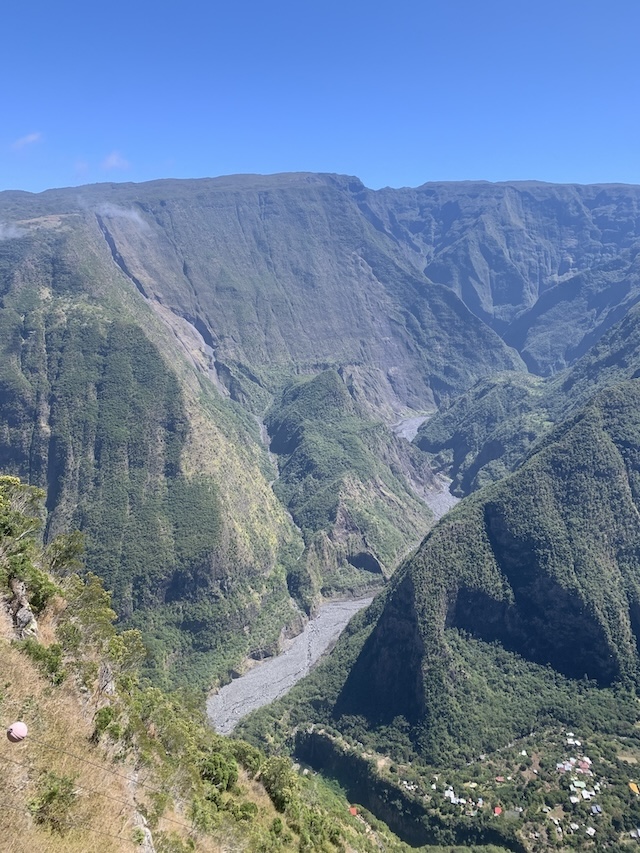

While a sight to see, Reunion Island is a host to one major downside — most of the water areas are prohibited for swimming due to having the highest per capita rate of shark attacks in the world. We were happy to find that there are some select spots where it is safe to swim, since the surrounding reef keeps the sharks out. We spent an afternoon at the beach and did some shallow water snorkeling and were pleased to see a variety of healthy coral and fish.
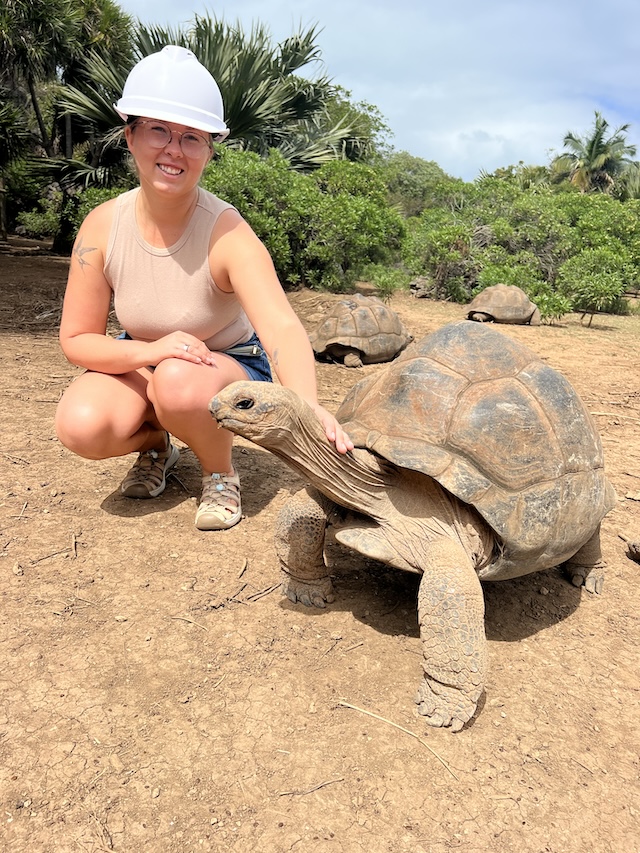

While in Reunion we completed all the preparatory paperwork for South Africa — one of the easiest we have ever done.
After spending weeks watching the weather patterns, we departed Reunion Island for South Africa, with a near perfect weather forecast and solid weather routing information provided by weather router Des Cason. Unfortunately, four days into the journey, the forecast changed. With five meter seas and 70 knot winds forecast, we had to find a spot to hide and fast.
Hiding from the Weather
With Des’ guidance, we hid behind an island on the southwest corner of Madagascar to wait for the ugly winds to die down. Two other cruising boats also waited there with us. Locals arrived swiftly in their small canoes and little sailboats, offering to barter and trade. It was a special way to spend five days. We waited for the storm to completely pass before departing, but one of the other boats could not wait that long and decided to “go for it” after the worst had passed. He was met with peak winds of 82 knots and wave heights in excess of seven meters. While he made it to South Africa safely, it was not without damage. The currents and winds in this part of the world can make for some extreme conditions and are not to be trifled with.
By the time the storm had passed, there was not enough of a window to make it to South Africa, so we headed to Mozambique to get a little closer for the final run in.
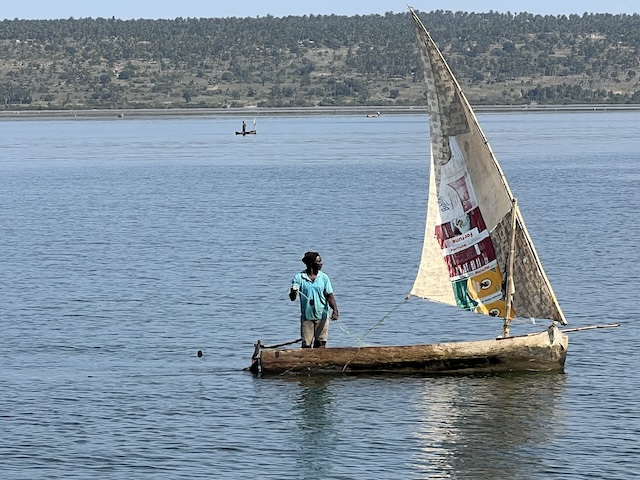

We split 13 days between two hiding spots in Mozambique, waiting for the weather to change and give us the window we needed. In the first of the two spots, we were accompanied by three other boats. We chose to move closer to South Africa and further down the coast when the opportunity arrived, hoping this would help us to take advantage of even the smallest of weather windows.
Having left Reunion Island on a Friday, September 13th (perhaps we should have known better), our arrival to Richard’s Bay took 27 days — far longer than we had anticipated. It was supposed to be a 10 day trip!
A Whale of a Welcome to South Africa
On the final approaches to South Africa, after all our precautions for safety, we were nearly taken out by a whale and her calf! Since we hadn’t had our engines running, she didn’t hear us coming and we didn’t see them until they were directly in front of us – about 25 meters away. Brent’s quick response and hand steering got us out of the way and the whale let us know we needed to go away quickly with a series of tail slaps. Now knowing there are whales in the area, we would recommend using your motor while approaching the SA coast and the shallower water.
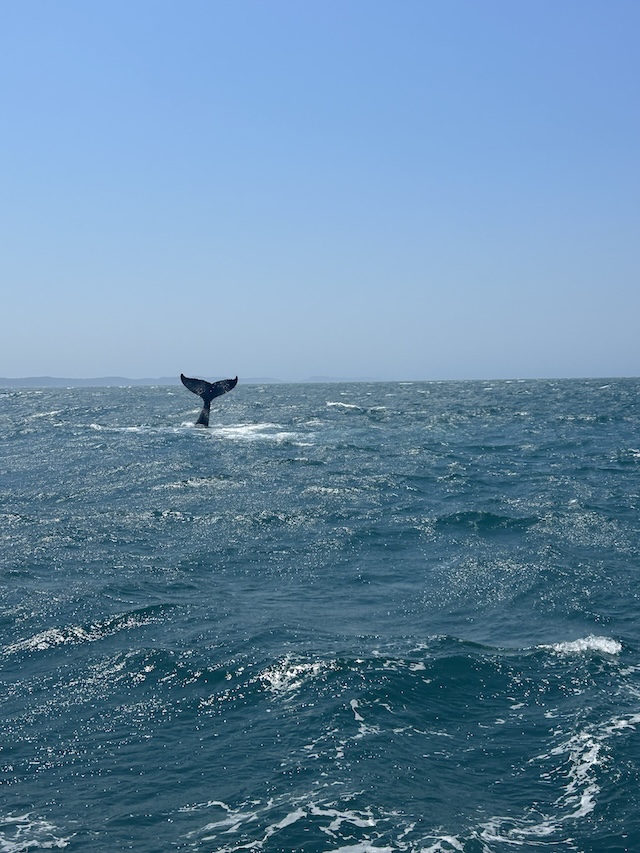

With whales at the beginning and whales at the end, we have completed our crossing of the Indian Ocean. Next up for us: sailing around South Africa.
Brent Crack and Mary Bevan
SV Knot Safety
………………………………
About the Authors:
Brent Crack and Mary Bevan are two Canadian citizens who are sailing around the world on their Lagoon 400 catamaran SV Knot Safety. After leaving Panama in December 2022, they are following a path to “go where others don’t” in their circumnavigation and have crossed the Pacific via Easter Island, French Polynesia and the Cook Islands to New Zealand. After crossing the Tasman Sea to Sydney, Australia, they took the southern route of Australia to Fremantle and Geraldton in Western Australia which was their departure point for their Indian Ocean Crossing.
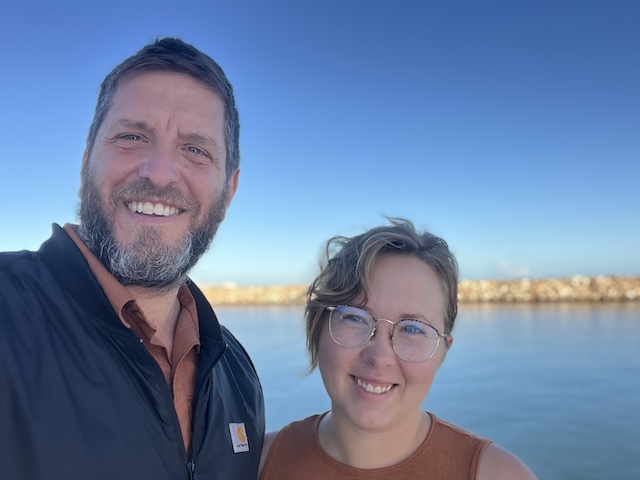

………………………………
The opinions expressed in this article are the author’s own and do not reflect the view of Noonsite.com or World Cruising Club.
………………………………
Other reports from Brent and Mary’s Circumnavigation Odyssey:
Indian Ocean Crossing Part 1: Australia to Rodrigues
- Australia: Heading South From Sydney Going West
- Australia, Sydney: New Year’s Eve Magic and Chaos.
- Cook Islands, Rarotonga: We’d Return in a Heartbeat – Just Not With a Boat!
- French Polynesia: Making Sense of Anchoring Restrictions
- French Polynesia, Society Islands: The Beauty and Disappointment
- French Polynesia, Tuamotus: Coral Bombies, Snorkelling and Sharks
- French Polynesia – A Warm Welcome to the Gambiers
- Pitcairn Island – Well Worth the Journey
- Rapa Nui (Easter Island) – Nothing Short of Amazing
………………………………
Find out all news, reports, links and comments posted on Noonsite, plus cruising information from around the world, by subscribing to our FREE monthly newsletter. Go to https://www.noonsite.com/newsletter/.
Related to following destinations: Ambodifototra (Ile Sainte Marie), Analalava, Antisiranana (Diego Suarez), Bazaruto, Beira, Fort Dauphin (Taolagnaro), îles Eparses (Scattered Islands), Ilha de Mozambique, Madagascar, Mahajanga, Maputo, Mauritius, Mauritius, Mocimboa da Praia, Mozambique, Nacala, Nossi-Be (Hell-Ville), Nosy Hara, Pemba, Pointe des Galets (Le Port), Port Mathurin, Reunion Island, Richards Bay, Rodrigues, Saint Gilles les Bains, Saint-Pierre, South Africa, Toamasina, Toleara, Vilankulo
Related to the following Cruising Resources: Circumnavigation, Circumnavigation, Indian Ocean, Routing





